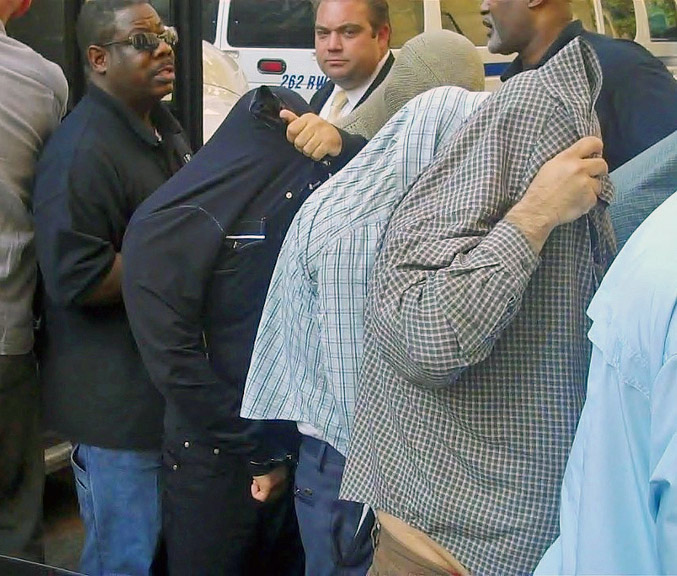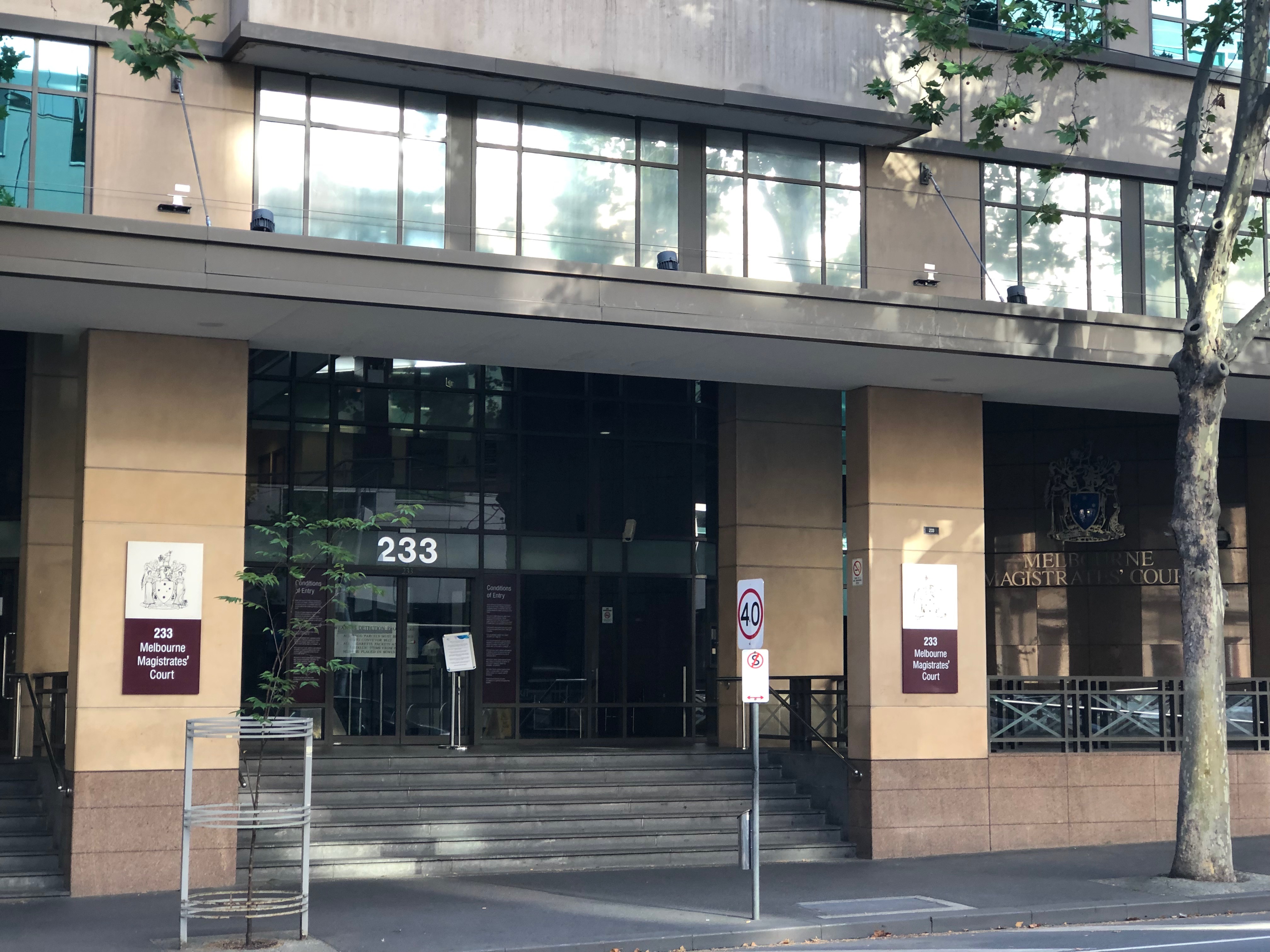|
Desk Appearance Ticket
In New York City, a desk appearance ticket (DAT) is an order to appear in the New York City Criminal Court for an arraignment. Details A person who receives a DAT has been arrested. The DAT is simply one of two alternative means by which a person who is arrested appears for arraignment, or first appearance. A person who receives a DAT is permitted to appear in court on their own on the date indicated on the DAT document. A person who does not receive a DAT is processed through the arrest to arraignment system and is supposed to have their arraignment within 24 hours. From the point that the case is arraigned, a DAT case is like any other criminal case. DATs may be issued for violation, misdemeanors, and "E" felonies. If a person fails to return to court on the date indicated on the DAT, the Court will issue an arrest warrant. The authority for a DAT is found in Criminal Procedure Law §150.10, which describes a DAT as "a written notice issued and subscribed by a police offi ... [...More Info...] [...Related Items...] OR: [Wikipedia] [Google] [Baidu] |
New York City
New York, often called New York City (NYC), is the most populous city in the United States, located at the southern tip of New York State on one of the world's largest natural harbors. The city comprises five boroughs, each coextensive with a respective county. The city is the geographical and demographic center of both the Northeast megalopolis and the New York metropolitan area, the largest metropolitan area in the United States by both population and urban area. New York is a global center of finance and commerce, culture, technology, entertainment and media, academics, and scientific output, the arts and fashion, and, as home to the headquarters of the United Nations, international diplomacy. With an estimated population in 2024 of 8,478,072 distributed over , the city is the most densely populated major city in the United States. New York City has more than double the population of Los Angeles, the nation's second-most populous city. [...More Info...] [...Related Items...] OR: [Wikipedia] [Google] [Baidu] |
New York City Criminal Court
The Criminal Court of the City of New York is a court of the Judiciary of New York (state), State Unified Court System in New York City that handles misdemeanors (generally, criminal law, crimes punishable by fine or imprisonment of up to one year) and lesser offenses, and also conducts arraignments (initial court appearances following arrest) and preliminary hearings in felony cases (generally, more serious offenses punishable by imprisonment of more than one year). It is a single citywide court. The Deputy Chief Administrative Judge for the New York City Courts is responsible for overseeing the day-to-day operations of the NYC trial-level courts, and works with the Administrative Judge of the Criminal Court in order to allocate and assign judicial and nonjudicial personnel resources. One hundred seven judges may be appointed by the Mayor of New York City, Mayor to ten-year terms, but most of those appointed have been transferred to other courts by the Chief Administrator of the ... [...More Info...] [...Related Items...] OR: [Wikipedia] [Google] [Baidu] |
Arraignment
Arraignment is a formal reading of a criminal charging document in the presence of the defendant, to inform them of the criminal charges against them. In response to arraignment, in some jurisdictions, the accused is expected to enter a plea; in other jurisdictions, no plea is required. Acceptable pleas vary among jurisdictions, but they generally include '' guilty'', ''not guilty'', and the peremptory pleas (pleas in bar) setting out reasons why a trial cannot proceed. Pleas of ''nolo contendere'' ('no contest') and the Alford plea are allowed in some circumstances. By country Australia In the Australian legal system, arraignment is the first stage in a criminal trial. The indictment is read to the defendant, who is asked to plead guilty or not guilty. Arraignment procedures vary somewhat among jurisdictions. In New South Wales, the arraignment takes place before the judge only. In South Australian practice, the jury hears the arraignment. In Queensland the indictment i ... [...More Info...] [...Related Items...] OR: [Wikipedia] [Google] [Baidu] |
Infraction
A summary offence or petty offence is a violation in some common law jurisdictions that can be proceeded against summarily, without the right to a jury trial and/or indictment (required for an indictable offence). Canada In Canada, summary offences are referred to as summary conviction offences. As in other jurisdictions, summary conviction offences are considered less serious than indictable offences because they are punishable by shorter prison sentences and smaller fines. These offences appear both in the federal laws of Canada and in the legislation of Canada's provinces and territories. For summary conviction offences that fall under the jurisdiction of the federal government (including all criminal law), section 787 of the Criminal Code specifies that, unless another punishment is provided for by law, the maximum penalty for a summary conviction offence is a sentence of 2 years less a day of imprisonment, a fine of $5,000 or both. As a matter of practical effect, some ... [...More Info...] [...Related Items...] OR: [Wikipedia] [Google] [Baidu] |
Misdemeanors
A misdemeanor (American English, spelled misdemeanour elsewhere) is any "lesser" criminal act in some common law legal systems. Misdemeanors are generally punished less severely than more serious felonies, but theoretically more so than administrative infractions (also known as minor, petty, or summary offences) and regulatory offences. Typically, misdemeanors are punished with prison time of no longer than one year, monetary fines, or community service. Distinction between felonies and misdemeanors A misdemeanor is considered a crime of lesser seriousness, and a felony one of greater seriousness. The maximum punishment for a misdemeanor is less than that for a felony under the principle that the punishment should fit the crime. One standard for measurement is the degree to which a crime affects others or society. Measurements of the degree of seriousness of a crime have been developed. In the United States, the federal government generally considers a crime punishable w ... [...More Info...] [...Related Items...] OR: [Wikipedia] [Google] [Baidu] |
Felonies
A felony is traditionally considered a crime of high seriousness, whereas a misdemeanor is regarded as less serious. The term "felony" originated from English common law (from the French medieval word "''félonie''") to describe an offense that resulted in the confiscation of a convicted person's land and goods, to which additional punishments, including capital punishment, could be added; other crimes were called misdemeanors. Following conviction of a felony in a court of law, a person may be described as a felon or a convicted felon. In many common law jurisdictions, such as England and Wales, Ireland, Canada, Australia, and New Zealand, crimes are no longer classified as felonies or misdemeanors. Instead, crimes are classified by mode of trial as indictable offences, triable by jury, which are usually more serious, and summary offences, triable by summary procedure without a jury, which are usually less serious. In some civil law jurisdictions, such as Italy and Spain, t ... [...More Info...] [...Related Items...] OR: [Wikipedia] [Google] [Baidu] |
Criminal Procedure Law
Criminal procedure is the adjudication process of the criminal law. While criminal procedure differs dramatically by jurisdiction, the process generally begins with a formal criminal charge with the person on trial either being free on bail or incarcerated, and results in the conviction or acquittal of the defendant. Criminal procedure can be either in form of inquisitorial or adversarial criminal procedure. Basic rights Currently, in many countries with a democratic system and the rule of law, criminal procedure puts the burden of proof on the prosecution – that is, it is up to the prosecution to prove that the defendant is guilty beyond any reasonable doubt, as opposed to having the defense prove that they are innocent, and any doubt is resolved in favor of the defendant. This provision, known as the presumption of innocence, is required, for example, in the 46 countries that are members of the Council of Europe, under Article 6 of the European Convention on Human Righ ... [...More Info...] [...Related Items...] OR: [Wikipedia] [Google] [Baidu] |
Universal Summons
Universal is the adjective for universe. Universal may also refer to: Companies * NBCUniversal, a media and entertainment company that is a subsidiary of Comcast ** Universal Animation Studios, an American Animation studio, and a subsidiary of NBCUniversal ** Universal TV, a television channel owned by NBCUniversal ** Universal Kids, an American current television channel, formerly known as Sprout, owned by NBCUniversal ** Universal Pictures, an American film studio, and a subsidiary of NBCUniversal ** Universal Television, a television division owned by NBCUniversal Content Studios ** Universal Destinations & Experiences, the theme park unit of NBCUniversal * Universal Airlines (other) * Universal Avionics, a manufacturer of flight control components * Universal Corporation, an American tobacco company * Universal Display Corporation, a manufacturer of displays * Universal Edition, a classical music publishing firm, founded in Vienna in 1901 * Universal Entertainment ... [...More Info...] [...Related Items...] OR: [Wikipedia] [Google] [Baidu] |
New York County Lawyers' Association
The New York County Lawyers Association (NYCLA) is a bar association located in New York City. The New York County Lawyers Association was founded in 1908 because the existing bar association excluded some lawyers from membership due to their race, gender, ethnicity or religion. A meeting held in Carnegie Hall in 1907 determined to create a "democratic bar association" and 143 attorneys incorporated the NYCLA a few months later. *1930 – 14 Vesey Street building is dedicated as the Home of Law. *1943 – NYCLA successfully urges the American Bar Association to declare its membership open to all lawyers without regard to race. *1946 – NYCLA works with other local bar associations to establish legal referral services to provide referrals to attorneys, many of whom were returning from serving in World War II. *1949 – NYCLA sponsors a conference on civil rights in the post-World War II era. *1952 – NYCLA publishes a groundbreaking report on public apathy toward delinquent child ... [...More Info...] [...Related Items...] OR: [Wikipedia] [Google] [Baidu] |
Judiciary Of New York
The Judiciary of New York (officially the New York State Unified Court System) is the judicial branch of the Government of New York (state), Government of New York, comprising all the courts of the State of New York (excluding extrajudicial administrative courts). The New York Court of Appeals, Court of Appeals, sitting in Albany and consisting of seven judges, is the state's supreme court, highest court. The New York Supreme Court, Appellate Division, Appellate Division of the New York State Supreme Court is the principal intermediate appellate court. The New York State Supreme Court is the trial court of general jurisdiction in civil cases statewide and in criminal cases in New York City. Outside New York City, the New York County Court, 57 individual County Courts hear felony criminal cases. There are a number of local courts in different parts of the state, including the New York City Civil Court and New York City Criminal Court. By one estimate, debt collection actions are ... [...More Info...] [...Related Items...] OR: [Wikipedia] [Google] [Baidu] |
Law Of New York (state)
The law of New York consists of several levels, including constitutional, statutory, regulatory and case law, and also includes local laws, ordinances, and regulations. The ''Consolidated Laws of New York, Consolidated Laws'' form the general statutory law. The Constitution of New York is the foremost source of state law. The legislation of New York State Legislature, the Legislature is published in the official ''Laws of New York'' and codified in the ''Consolidated Laws of New York''. State agency rules and regulations are promulgated in the ''New York State Register'' and codified in the ''New York Codes, Rules and Regulations''. Because New York is a common law state, every opinion, memorandum, and motion sent by the New York Court of Appeals (New York's highest court) and the Appellate Division of the New York Supreme Court (an intermediate appeals court) is published. Each local government may also adopt local laws, and counties, cities, and towns may promulgate ordin ... [...More Info...] [...Related Items...] OR: [Wikipedia] [Google] [Baidu] |
New York (state) Law
New York most commonly refers to: * New York (state), a state in the northeastern United States * New York City, the most populous city in the United States, located in the state of New York New York may also refer to: Places United Kingdom * New York, Lincolnshire * New York, North Yorkshire * New York, Tyne and Wear United States New York state * New York metropolitan area, the region encompassing New York City and its suburbs * New York County, covering the same area as the New York City borough of Manhattan * New York, the US Postal Service address designating the Manhattan borough * New York University, a private research university in the New York City * Province of New York, the British colony preceding the state of New York Other states * New York, Florida, an unincorporated community in Santa Rosa County * New York, Iowa, a former town in Wayne County * New York, Kentucky, an unincorporated community in Ballard County * New York, Missouri, a ghost town in Scot ... [...More Info...] [...Related Items...] OR: [Wikipedia] [Google] [Baidu] |



